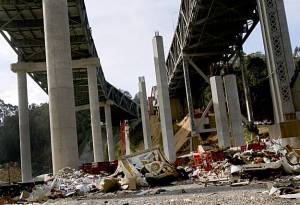 Amtrak Capitol Corridor is patting itself on the back for 50% reduction in diesel exhaust.
Amtrak Capitol Corridor is patting itself on the back for 50% reduction in diesel exhaust.
From the outside, blue and silver Locomotive No. 2015 doesn’t look much different from the half-dozen other Amtrak engines that shuttle commuters between San Jose and Sacramento every day.
But the train is noteworthy for what you can’t see: a nearly 50 percent reduction in diesel exhaust.
Locomotive No. 2015, built in 2001, was retrofitted with high-tech power assemblies, water pumps and radiators designed to slash emissions by up to 50 percent. The project, unveiled at the Amtrak station in West Oakland on Tuesday morning, cost $826,000 and was paid for by the Bay Area Air Quality Management District, the Sacramento Metro Air Quality Management District and the EPA.
The reason Amtrak locomotives are so polluting isn’t just the lack of clean diesel technology, but the extremely bad fuel economy as result of FRA “safety” regulations. Compared to modern European DMU rolling stock, the Capitol Corridor consumes twice as much fuel. It is literally an SUV on rails.
Back in 1998, LS Transit Systems did a performance study, comparing Caltrain operations to (what was then) modern European DMU. Caltrain (which has very similar equipment and performance characteristics as Capitol Corridor) compared very poorly. A 4-car (560-seat) Caltrain uses 2.23 gallons of fuel per vehicle mile. By comparison, 3 coupled European DMU’s would need 0.99 gallons per vehicle mile. The difference in fuel efficiency is due almost entirely to huge weight penalty of FRA “safety” regulations.
With better power-weight ratio, the European DMUs offer much better braking and acceleration performance, which reduces dwell time at stations. This helps make train travel more time-competitive against the automobile.








